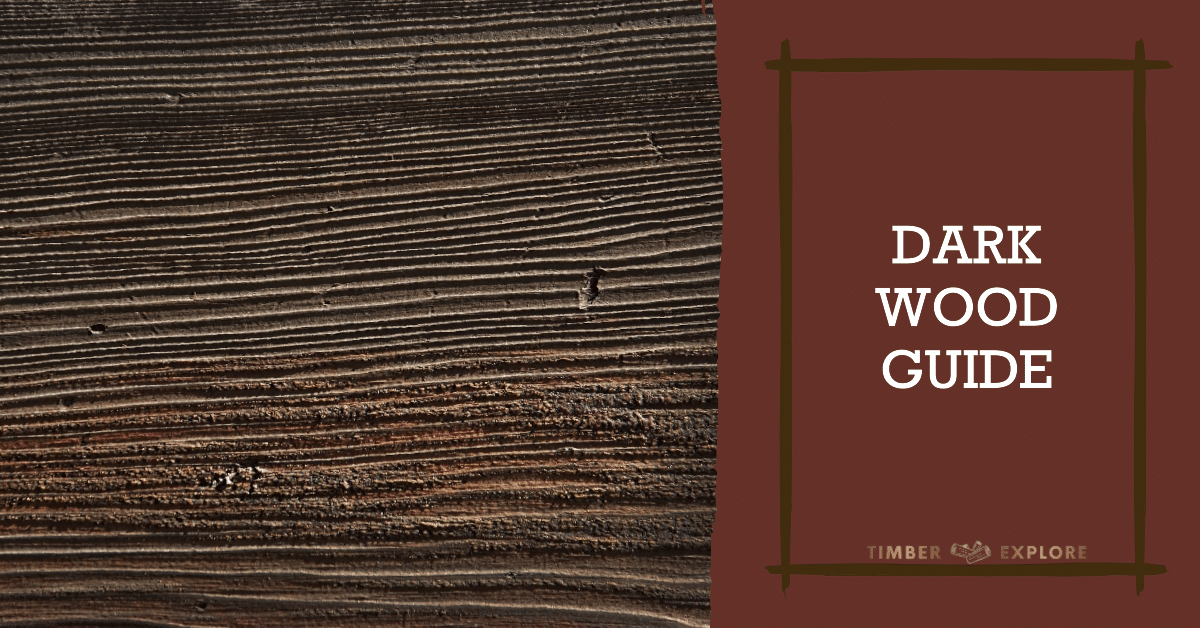Dark wood, with its rich, luxurious appearance, has been a favorite choice for furniture, flooring, and various architectural applications for centuries. From the deep, chocolate tones of mahogany to the warm, reddish hues of cherry, dark wood exudes a timeless elegance that adds sophistication to any space. In this comprehensive guide, we will explore various types of dark wood, delve into their unique properties, examine their diverse uses, and weigh the advantages and disadvantages associated with them.
Whether you’re a homeowner, interior designer, or woodworking enthusiast, understanding the nuances of dark wood can help you make informed decisions when choosing the perfect material for your project.
Types of Dark Colored Wood
1. Ebony

Renowned for its intense, jet-black color, it is considered one of the darkest woods. While it’s less commonly used for large-scale projects due to its limited availability and high cost, ebony hardwood is cherished for its unique appearance in small, ornamental items and fine woodworking.
Properties:
Color: Deep black
Density: Very high
Grain: Typically straight
Durability: Excellent
Workability: Difficult due to hardness
Uses: Inlay work, ornamental items, fine woodworking, musical instruments
2. American Black Walnut
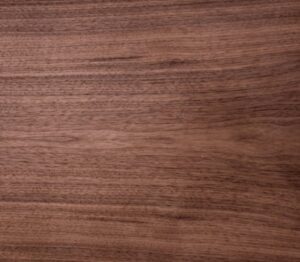
Characterized by its rich dark brown to nearly black color, it is prized for its deep, elegant tones and attractive grain patterns. It’s often used in high-quality furniture and is popular for making fine woodworking pieces like gunstocks & musical instruments.
Properties:
Color: Dark brown to black
Density: Medium to high
Grain: Varied, often with attractive patterns
Durability: Good
Workability: Excellent
Uses: Furniture, flooring, cabinetry, carving, architectural elements
3. African Blackwood
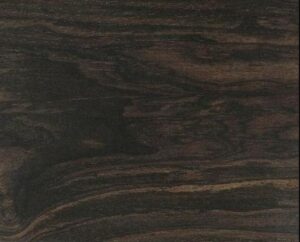
African Blackwood, a species native to Africa, is known for its jet-black color and beautiful grain patterns. This hardwood is used for ornamental and decorative purposes, as well as in the crafting of high-quality musical instruments.
Properties:
Color: Deep black
Density: Very high
Grain: Fine and variegated
Durability: Excellent
Workability: Challenging due to hardness
Uses: Musical instruments (clarinets, oboes, bagpipes), ornamental carvings
4. Ziricote
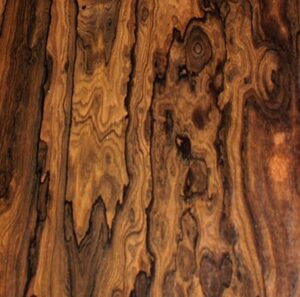
Ziricote wood, with its dark brown to black color and striking grain patterns, is a favorite for high-end custom guitars and luxury furniture. Its unique appearance makes it highly sought after for decorative and artistic applications.
Properties:
Color: Dark brown to black
Density: Medium to high
Grain: Varied, often with mesmerizing patterns
Durability: Good
Workability: Fairly easy to work with
Uses: Musical instruments, luxury furniture, decorative veneers
5. Mahogany

With its dark reddish-brown color, is a classic choice for high-end furniture, flooring, and architectural applications. Known for its exceptional durability, mahogany is often used in fine woodworking and boat-building due to its resistance to rot and insects.
Properties:
Color: Deep reddish-brown
Density: High
Grain: Straight and fine
Durability: Excellent
Workability: Easy to shape and finish
Uses: Furniture, cabinets, boat-building, flooring, architectural details
6. Cocobolo
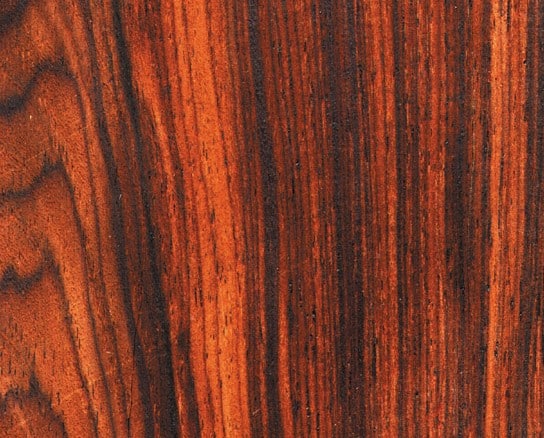
Cocobolo wood features a vibrant mix of colors, including deep reds, oranges, and purples. Its unique appearance and fine grain make it ideal for crafting decorative items and luxury accessories.
Properties:
Color: Varied, with deep reds, oranges, and purples
Density: Very high
Grain: Fine and interlocked
Durability: Excellent
Workability: Challenging due to hardness
Uses: Decorative items, luxury accessories, knife handles
7. Wenge

Wenge wood, with its dark brown to black color and distinctive grain, is valued for its strength and durability. It’s commonly used in high-traffic areas and for creating bold, modern designs.
Properties:
Color: Dark brown to black
Density: Very high
Grain: Straight and striking
Durability: Excellent
Workability: Moderately challenging
Uses: Flooring, cabinetry, modern furniture, architectural details
8. Teak Wood
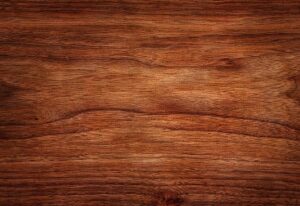
Teak wood is known for its golden-brown to dark-brown color, and it’s celebrated for its exceptional resistance to water and insects. This makes it a popular choice for outdoor applications, including boat decks and garden furniture.
Properties:
Color: Golden-brown to dark brown
Density: High
Grain: Straight and coarse
Durability: Excellent, especially in wet environments
Workability: Fairly easy to work with
Uses: Outdoor furniture, boat decks, garden accessories
9. Sapele

Sapele wood, with its reddish-brown to dark brown color, is an attractive and cost-effective alternative to mahogany. It’s often used for furniture, cabinetry, and architectural details.
Properties:
Color: Reddish-brown to dark brown
Density: Medium to high
Grain: Interlocked and wavy
Durability: Good
Workability: Fairly easy to work with
Uses: Furniture, cabinets, architectural elements
10. Purpleheart
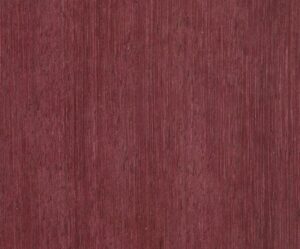
Purpleheart wood is prized for its striking purple color, which deepens over time. Its distinctive appearance makes it a favorite for decorative and artistic projects.
Properties:
Color: Vibrant purple, darkening with age
Density: Very high
Grain: Straight and fine
Durability: Excellent
Workability: Moderately challenging
Uses: Decorative items, artistic pieces, fine woodworking
11. Jatoba (Brazilian Cherry)

Jatoba, also known as Brazilian Cherry, has a rich reddish-brown color and is valued for its exceptional hardness and durability. It’s often used for high-traffic areas and fine woodworking.
Properties:
Color: Rich reddish-brown
Density: Very high
Grain: Interlocked and wavy
Durability: Excellent
Workability: Moderately challenging
Uses: Flooring, cabinetry, fine woodworking
12. Cherry Wood

Cherry wood, with its warm, reddish-brown hues, is known for its beautiful aging process, as it deepens in color over time. It’s a popular choice for creating elegant, timeless pieces of furniture and cabinetry. Cherry wood offers a balance between dark wood’s richness and a lighter, warm aesthetic.
Properties:
Color: Reddish-brown, darkening with age
Density: Medium
Grain: Fine and straight
Durability: Good
Workability: Excellent
Uses: Furniture, cabinetry, millwork, architectural details
13. Rosewood

Rosewood, with its dark brown to purplish hues, is celebrated for its intricate grain patterns and unique scent. It’s often used in high-quality furniture and musical instruments due to its acoustic properties and rich appearance.
Properties:
Color: Dark brown to purplish
Density: High
Grain: Varied, often with striking patterns
Durability: Good
Workability: Challenging due to hardness
Uses: Furniture, musical instruments, decorative veneers, architectural details
Advantages of Dark Wood
- Timeless Elegance: Dark wood exudes a classic, sophisticated look that stands the test of time.
- Durability: Many dark woods, such as mahogany, rosewood, and jatoba, are highly resistant to damage, rot, and pests, ensuring long-lasting beauty.
- Unique Grain Patterns: Dark wood often boasts striking grain patterns, adding visual interest to any project and making each piece one-of-a-kind.
- Versatility: Dark wood is used for various applications, from furniture to flooring and even architectural details.
- Aging Gracefully: Some dark woods, like cherry and purpleheart, develop richer colors and become even more beautiful as they age.
- Acoustic Properties: Certain dark woods, such as rosewood and African Blackwood, are prized for their acoustic qualities and are favored for crafting musical instruments.
- Water and Insect Resistance: Woods like teak are naturally resistant to water and insects, making them ideal for outdoor applications.
Disadvantages of Dark Wood:
- Cost: High-quality dark wood can be expensive, impacting the overall cost of furniture and other items crafted from it.
- Maintenance: Some dark woods, like ebony, may require special care to maintain their luster. Regular polishing and maintenance may be necessary to preserve their appearance.
Which is the Best Dark Wood For Your Project?
Selecting the best dark wood for your project ultimately depends on a careful consideration of your specific needs and preferences. For timeless elegance and durability in furniture, mahogany might be the ideal choice, while the sleek and luxurious ebony could be perfect for high-end projects.
Consider the overall aesthetic you desire, the intended use of the wood, and your budget constraints. With a thorough understanding of the types, properties, pros, and cons outlined in Timber Explore’s dark wood guide, you are now equipped to make informed decisions that align with your project goals, ensuring a result that is not only visually stunning but also crafted to endure the test of time.

